Interview with MIR
I’m always looking for sources of inspiration as reference for my visualization work. I’m searching for it in traditional art, architectural photography, movies and obviously in architectural visualization done by others. Norway based studio MIR has become a regular inspiration station for me. They have a unique style and manage to produce some of the most emotional visualization I have seen to date. I wanted to take my interest in their work one step further so I contacted them and started a conversation that turned into this interview. I hope youll enjoy it as much as I did.
MIR is owned and run by two partners
Trond Greve Andersen (1979) Graduate of the Norway National Academy of Art and design at Visual communications.
Mats Andersen (1978) Graduate of the Norway National Academy of Art and design at Interior and furniture design.
Other team members include Vegard Aarseth, Jan-Erik Sletten, Nick O Leary, Tomek Miksa and Lars Tornoe.
How did MIR came to be?
Me (Trond) and Mats met at the National Academy of Arts 12 years ago (1999). He studied Furniture and Spatial Design and I was trying to become a graphic designer/illustrator. At that time he was already using Lightwave for his furniture projects. I couldnt believe the stuff he produced with it. The radiosity and caustics were amazing at that time.
Any special meaning to the name MIR?
MIR means peace and world in Russian. The MIR satellite was a high-tech installation in outer space controlled with analogue tools. The name is a gesture to how love, inventiveness, curiosity and knowledge is more important than modern digital technology.
MIR has a very unique and recognizable visualization style, that I like very much. It is dramatic and gray, most of time winter like. Can you define how that came to be? Does the geographical location play a big part in this?
We Norwegians like to think of ourselves as part of nature. In MIR we aim for an organic and naturalistic style that resonates with our understanding of the world. Rain, wind, snow and clouds are more normal to us than blue sky and sun. We use ambience as a tool to tell stories about the architecture.
Do clients always accept MIR’s unique style or sometimes demand other things?
I cant remember a single time our clients have talked about The MIR style. Sometimes they show us works from other companies that they want us to copy, an approach that I think is embarrassing for both us and them.
How much freedom do you have in your client work?
Less than we would like 🙂 hi, hi…
It varies a lot. Many architects simply dont understand what you can and cannot do with an image. There is so much talk about technical topics and things like camera angles but no discussion about the visualization intent.
Most people forget that images are an emotional media, and there are limits to how much intellectual ideas you can communicate. It is very common that our clients say Ahh, I love this image… but can you move the camera up a bit so that we see the space in front, and remove the clouds and put some lights inside…. They forget the reason they loved the image in the first place was that we didnt do those things they ask.
I think that if we don’t get enough freedom, it comes down to our lack of communicating with our clients.
Can you share more details about MIR’s typical client workflow from start to finish of a project?
For competitions, we start by reading the brief and listening to what the architects have to say about the project. Its good to understand the context they are designing for, and to understand how the architects would like to be branded. We try to find some sort of unique approach to the images that resonates with the project, the site and the ideas and identity of the architects.
There are huge differences in the philosophy and image of the offices. The images should show a little of the attitude of the firm. Some practices have a very classical approach to architecture that will fit a very photographical style. Others are more conceptual. Maybe they would be better off with a more artistic, collage-like look?
During this phase of the project, we work on preliminary 3d models. We dont put too much consideration into textures . The main idea is to find compositions and stories that are strong enough on their own, even without a fine tuned architecture to support it. Instead of focusing on camera angles, we try to give each image a name that explains the concept. We then look for a moment in or around the building that helps us communicate what we are looking for.
Architects often find camera angles that they would like us to explore, some even want complete control over this and select the cameras for us to produce. We try out their suggestion, but always go hunting for something unique and special as well since their first picks might be too boring. We look for the unsuspected, the surprising. A lot of things can occur that they didnt think of, like nice silhouettes, reflections, etc. 99% of our job is in this phase, and it is not uncommon for us to produce 20 sketches for a 3 image project. After this, it is more about craftsmanship and getting things done the right way.
Can you define the balance between Pure Render and Post Production in your work?
The Lightwave render engine is the backbone in a lot of our work. But we want the images to read like there has been deliberate thought behind the images, and that requires some interference 🙂
What kind of hardware do you use?
We use Dual 6 core Intel BOXX workstations and have a small 10 node render farm.
Can you tell us about the software you use in the studio?
For the 3d stuff we use Lightwave, modo and 3dsMax. VRay for 3dsmax and FPrime (or native) with Lightwave. For post work we use Adobe Photoshop and After Effects. I think that in my daily work I use mostly Lightwave with FPrime, HDinstances and a Photoshop actions that MIR ex-employee Kristian made to save clipart on our server.
What are your thoughts about modo vs. Lightwave?
I am so used to Lightwave that it would take too much to switch. But modo looks way better for modeling at least.
Have you been trying the new GPU rendering solutions that are being offered these day?
Nope. I’ve had too much bad experience with buggy early technology, so Im sitting on the fence for now. Luckily some of the other guys at the office is more up to date on these things than me.
Going back to MIR being a world leading visualization firm… can you tell us about any difficulties you might have had in the early days starting the company?
Thank you! We dont see it like us being a leading visualization firm, especially since we are only 7 guys, but it is nice to hear someone else referring to us as that 🙂 We still feel like geeks in a small office in the outskirts of the world.
MIR came about at the perfect time because back then, in the visualization business in Norway, no one knew what they were doing. We could just render stuff with reflections and people went nuts about it!
Our background as designers was very helpful, but it brought us problems because we over complicated the image creation process. There are some things, when making images, that you cant get to intellectual about. It is mostly about feelings.
In the beginning we were also a graphic design company, but we figured we could only be really good at one thing.
We still have trouble getting the most talented people to move to Norway to join us. That is a shame, because I feel like we have something special going on here. Our office vibe is very unique. All of the guys are proud of what they do, and are really trying to push the boundaries, and to change how people look upon our profession.
So you are looking for artists to join your office then. What are you looking for in an artist for him to be accepted?
Yes, we are looking for one or two senior artists at the moment. When they are in place, we will start an internship program. The person(s) we are looking for need to have a strong portfolio of international quality similar to the work we do. He or she has to have enough experience in the business to be able to help us run the office from day to day and help develop our team.
This year we have received more than 200 applications, but most of the people have a very technical focus and little or no professional experience. We are looking for someone with an eye for composition and with strong Photoshop skills. A lot of the architecture we work on is quite conceptual, just boxes or shapes… so it is important that the artist can work freely and help the architect develop something semi-abstract.
For some strange reason, a lot of people can do amazing interiors, but daytime exteriors seem to be a big challenge to make look interesting.
Are you considering artists from outside of Norway, and how exactly does that work considering work permits and residence?
Yes, we want our team to be international and from diverse backgrounds. We do our best to help with the residence. It used to be hard to arrange work permit for people from outside the EU, but now the rules are less strict, so it’s easier. We arrange what is called a special workers permit, and arrange hire for an apartment for a 3 months trial period. The trial period is for both parties, so that people can see if they enjoy living in Norway as well.
How was it to get clients back in the early days, and how is it now?
We had no clients 🙂
Our first clients were professors at our school who wanted to present their furniture design to producers. We used to send strange e-mails to architects to get their attention, but they must have thought we were retarded.
I remember that we dissembled old radios and sent transistors and stuff to potential clients… Why did we do that, it makes no sense?! Right now, we have to turn down a lot of work. It is a huge problem for us that we have to say no to a lot of our good old clients because we are fully booked all the time. The big names in architecture is used to calling up archviz companies a week before deadline, and we cant deliver that service.
We are looking for people, but its not easy.
What do you think about these crazy deadlines that have become almost a standard in our industry?
In an ideal world the visualization artists should be considered more a part of the architect team. On some projects, we have been included weeks before we start the real work. This is helpful in many ways. When we feel that we have a say in the actual strategy behind the images, our work feels way more fulfilling.
Did the client profile changed a lot since the early days?
Yes, I remember that we dreamed about doing work for an international architect not many years ago.
I consider MIR to be one of my top 5 source of architectural visualization inspiration which makes me ask – Who do you consider as a source of inspiration… Where do you go to find it?
Wow, thanks! We used to look a lot at other companies in the archviz business, like Luxigon and Labtop, and still really like a lot of the work other companies in the business produce. But after a while we found out that it is important to do our own thing based on our own design philosophy instead of being so hung up on fashion and styles.
Even if I still love the work of other companies in the business, I think we have to go outside to get inspiration. Too much of the archviz stuff looks just the same. Our main inspiration is photography. We regularly buy fashion, art and architecture magazines to get inspiration. We have this mood board where we put up clippings and stuff. There is a lot of really nice art out there 🙂
How does the work load divide among the studio members. does one artist take a project from start to finish, or does it spilt according to specialties?
Yes, one artist does everything from start to finish, but we have our specialties. For example, Jan-Erik at the office has this unique ability to create aerials without back plate photos… I dont get how he does that. I am not that good technically and I love more conceptual work, whereas others are super good at texturing. But we are a small company, so everyone knows what everyone else is working on and chip in if they have something they would like to say.
We do Photoshop Tweaks on each other’s images all the time. Since we spend about a week per image, it is easy to get blind from staring at it. The most important part of the workflow is to find a flow and go with it. To do that, you need to Sell a good, solid concept and to make sure that the architect trusts us. Uncertainty and heavy bureaucracy are the main enemies of good images.
MIR seems to do mostly Big scale projects. Is it just because you selected to showcase these specific projects on your website and publication?
We also do a lot of small scale projects. Some of it we put on our webpage. We dont discriminate 🙂
Any other activities besides work going on in MIR, like personal projects, hobbies, etc.
We are into so much strange things that its a wonder we get anything done at all. We are all regulars at the local gym across the street from our office. Other interests in the office is historic racing, basketball, surfing, scuba diving, downhill biking, snowboarding, telemark skiing, movies, literature, travelling and art.
Telemark Skiing?
He, he, I guess it’s not that common outside of Norway. It’s a Scandinavian traditional ski form. A bit like downhill or slalom only you use chunky cross country skies. The boots are hinged to the skis at the front.
Can you share with us some interesting stories about memorable projects / famous project you been working on – some inside stories you can share (with images too if possible)
I don’t have too many stories about the projects or our clients, but I can tell you about our first office. While attending art school, me and Mats hired an office that was 1,5 x 3 meters to start up MIR. It was pretty small. Every evening after school we walked over to our office (that we had painted in the MIR colors of red, grey and white). We sat back to back in that tiny space and ate frozen pizzas and potato chips while trying to figure out how to make nice 3d stuff. I smoked cigarettes as well. It must have been like hell for Mats. We had no clients, but worked and worked and worked. Within a year or two I got really fat, and Mats who used to be an active basketball player had stopped playing in the higher divisions and his girlfriend dumped him. It was the strangest time, but we learned so much. Ha, ha, now I remember that we had a meeting in that office with the CEO of the biggest architecture office in our town. He sat on a chair in the door opening 🙂
The technological advances in hardware and software allow more people to enter the architectural visualization field with less effort and experience, Does that effect MIR?
Yes, it affects us greatly. Soon, anyone can produce a photo real image of architecture. This development pushes us to further develop our skills in visual rhetoric and communication, Which in reality is what this business is all about.
Browsing your portfolio I stumbled upon the Marseille Nouveau Stade Velodrome video. Can you share some insight about the cityscape you made for this project and how you handled the massive crowd scene, perhaps also sharing a higher quality video with us?
The problem with that one is that for some strange reason we didnt do it in HD. After that, everything we have done has been in HD. The city and crowd are made with Lightwave HDInstances, a very simple and insanely stable plugin. The crowd is static, but the lights and everything makes it look more alive.
Can you share some work in progress drafts or sketches for a single project, representing a start to finish cycle, as I’m sure that will be very interesting to see?
I shared three images for a project we did a while ago. It shows a little of how much we sometimes do in Photoshop.
I enjoyed the conversation with Trond about MIR very much, and I hope so did you. You are welcome to comment on this article and ask questions using the comment box below! Surfs up!





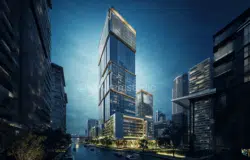
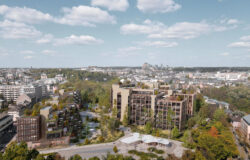



















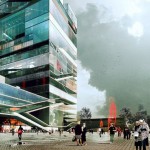
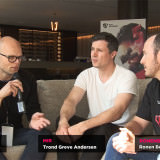
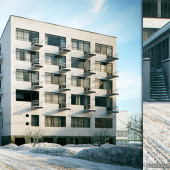
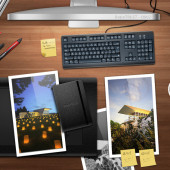
Great story! some things I can personally relate too.
Thank you and have a nice weekend.
Good interview! MIR has always been an inspiration to me and my work as well.
Great interview! Nice to learn from one of the best archviz company around 🙂
Excellent write-up! Thanks, Ronen and Trond.
Three things:
Very inspiring images. Great interview. High level reading.
Thanks to Trond and to Ronen.
Btw, this blog is rapidly becoming my preferred source for reading about the Archviz industry.
I agree with Ronen – MIR is one of the most imaginary visualisation companies out there. They are doing an outstanding job, making great imagery. And you Ronen are doing an outstanding job bringing us closer to guys like them. Thank you for the opportunity!
MIR is the BEST, great interview.
Awesome article. Lots of good inspiration in there beyond just the great images.
Great interview, nice the hear from top notch pros of the industry. I want clients that agree on thoses skies !! Everytime I put one of these, I’m asked to switch for a blue one 🙁
Inspiring images, great points in the reading. Instructive.
@pixel: Same issue here, I’m always asked to put blue skyes 🙂
I love this guys style. All of a good paintings.
Superb stuff. This is Archviz on a whole different level…
INSPIRING!!!
this is so refreshing different, …adorable style!
My favorite ArchViz studio!!
thanks a lot Ronen for this great interview.
One of my favourite architectural communication studios… greeting from Madrid!
really realllyy inspiring….arte factory lab studio based in france its very interesting too.I havent seen and article about that here.. greetings from mexico..
muchos saludos ronen!
Very much inspiring, Thanks guys for sharing!
Amazing stuff. Truly inspirational. Thanx ronen for this post.
and thank you Trond, for allowing us a peak into your bussiness. Beautifull stuff.
MIR, My old time favourite!
Nice interview!
Great interview Ronen! You’ve asked ’em exactly what I wanted to know… seriously, what a great read! Luxigon should be next…
Thank you very much! to all of you for the great feedback. It was great fun to do it, and guess what…
Luxigon is next!
Nice!!!
I love those guys!
Great Stuff!
@ Ronen – You asked all the right questions.
Thanks for the insight MIR.
Mike
It was a pleasure! Thanks Ronen, keep up the good work!
Greetings from Berlin
Your firm has always been the most inspiring above all archviz companies. Each illustration has a soul and a unique feel… i dare to say these are art pieces. Great work, and amazingly interesting interview
Great interview, Ronen! I also had a look at the one from dbox. It’s nice to be able to access this kind of material. Keep up the good work!
its really grt interview… @Ronen Bekerman
thier works are awesum and so beautifully they present every single image. 🙂
Hi,
These blog is awesome really.
Keep it up.
http://www.3d-architectural-rendering.com/3D-Walkthrough.html
its really great interview.http://goo.gl/5YBb8c